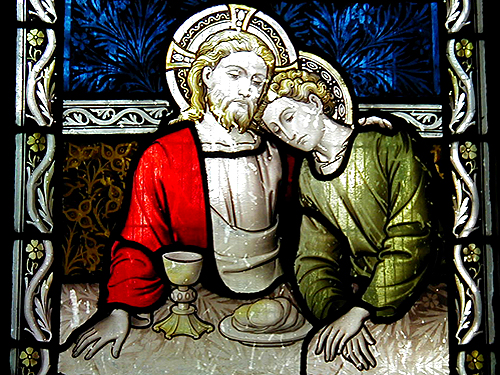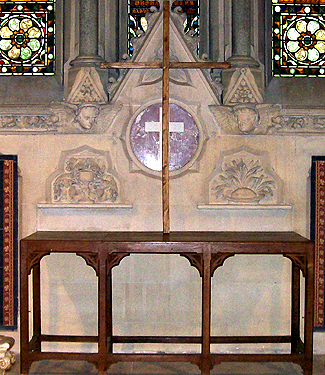
Pages in this section: Church Year | Advent | Christmas | Epiphany | Candlemas | Lent | Ash Wednesday | Mothering Sunday | Palm Sunday | Maundy Thursday | Good Friday | Holy Saturday | Easter | Ascension Day | Pentecost | Trinity Sunday | St James's Day | Harvest Festival | All Saints' Day & All Souls' Day | Remembrance Sunday
Maundy Thursday, or Holy Thursday, is the day before Good Friday. Maundy Thursday celebrates the Last Supper, the meal eaten by Jesus and his disciples on the night before he was crucified. They were in Jerusalem observing the Jewish festival of Passover (Pesach) which celebrates the freedom of the Children of Israel who were led out of Egypt by Moses. The Church Colour for Maundy Thursday is white.
Maundy Thursday remembers that when Jesus met with his disciples he gave them a new commandment, to love one another as he had loved them. Maundy comes from the Latin word mandatum; Christ's commandment, or mandate, that we should love one another.
What happens at St James's
On Maundy Thursday at St James's we celebrate a liturgy of contrasts as we reflect on Christ's loving service, and remember the night he was betrayed. We come to church to prepare ourselves for the sorrow and penitence of Good Friday and the promise of the joy of Easter and the Resurrection.
At the service there is a rich series of themes: humility and Christian service expressed by Christ’s washing of the disciples’ feet which the presiding priest enacts during the service; the institution of the Eucharist; the agony of Jesus in the Garden of Gethesemane before his arrest.
At the end of the service the sanctuary is stripped or all ornamentation as we recall Christ’s desolation and the congregation leave the church in darkness and silence as a mark of respect for what happened to Jesus. A watch is kept after the service for an hour reminding us of how Jesus kept watch in the Garden of Gethsemane.
Background
During the Last Supper Jesus broke the bread and poured the wine and shared them with his disciples. As he gave them to his disciples he told them to continue to do this to remember him; "Do this in remembrance of me". He said the bread was his body broken for them and the wine was his blood shed for them. Jesus was telling them that he was going to die and that when they shared bread and wine they should remember him. We continue to share bread (usually in the form of a wafer) and wine as part of our worship in church today in the celebration known as the Eucharist or Holy Communion.
Jesus told the disciples that he would be betrayed by one of the men sitting at the table with them who turned out to be Judas Iscariot. After supper Jesus went to the garden of Gethsemane to pray and was later betrayed by Judas and arrested.
As a way of showing love for others, there was a custom in England before 1689 for the king or queen to wash the feet of the poor in Westminster Abbey every Maundy Thursday. They also gave them gifts of food and clothing. In Queen Victoria's time, men received clothing, shoes and stockings, and women 35 shillings. Today our Queen does not wash feet or give clothing. Instead she gives out Maundy money (coins specially made for this occasion) to a group of pensioners.
Find out more
Maundy Thursday (service booklet)
 |
 |
|